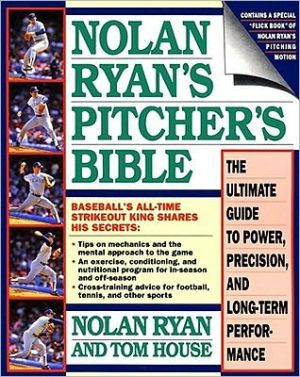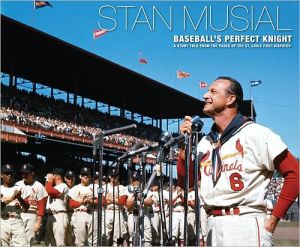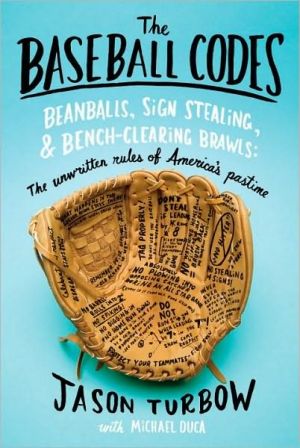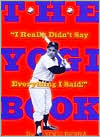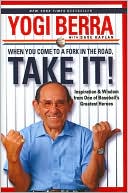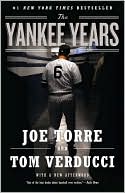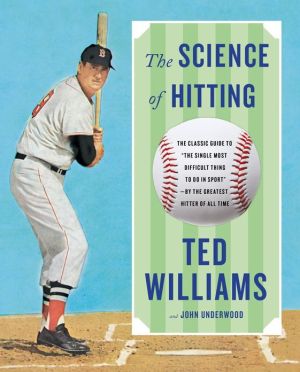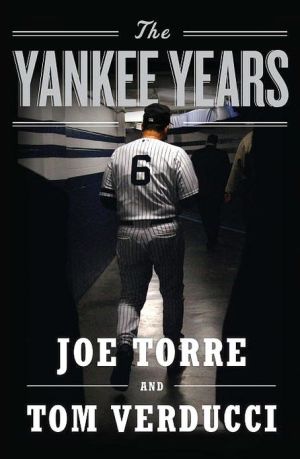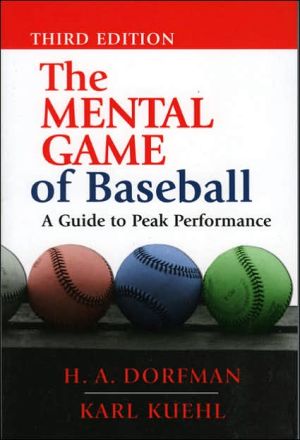Nolan Ryan's Pitcher's Bible: The Ultimate Guide to Power, Precision and Long-term Performance
How does Nolan Ryan still do it?\ At 43 years old, Nolan Ryan is a marvel. He is still blowing his fastballs by hitters at an age when most pitchers have long since retired — or have learned to depend on guile instead of power. But the Ryan express keeps chugging on, getting more unhittable, not less.\ Nolan Ryan's Pitcher's Bible tells us the secrets of Ryan's success. Drawing on Ryan's practical experience and Tom House's research expertise, it shows how the right combination of exercise...
Search in google:
How does Nolan Ryan still do it? At 43 years old, Nolan Ryan is a marvel. He is still blowing his fastballs by hitters at an age when most pitchers have long since retired — or have learned to depend on guile instead of power. But the Ryan express keeps chugging on, getting more unhittable, not less. Nolan Ryan's Pitcher's Bible tells us the secrets of Ryan's success. Drawing on Ryan's practical experience and Tom House's research expertise, it shows how the right combination of exercise and motivation can help a pitcher develop to his greatest potential. Nolan Ryan's Pitcher's Bible includes: • Nolan Ryan's complete fitness program for pitchers — including weight training, aerobic exercise, and diet — based on the latest scientific research and his 24 years of experience as a major leaguer.• The most up-to-date methods for preventing arm injuries by establishing proper mechanics, a conditioning base, and throwing work loads.• A timetable for keeping a pitcher in top shape year-round, including specific exercise intervals to meet the individual strength demands of each pitcher's throwing motion, maximum velocity, and maximum weekly number of pitches.• An in-depth presentation of Ryan's pitching strategy — how he prepares himself mentally for a game, an analysis of his pitch selection for different types of hitters, and how he applies his training regimen to improving his effectiveness on the mound. Illustrated with black-and-white photos of Ryan in action, along with photos and line drawings of the recommended exercises, Nolan Ryan's Pitcher's Bible is the ultimate book on pitching, by the ultimate pitcher. Publishers Weekly Bayless, a Texas sportswriter who has covered the Dallas Cowboys for 12 years, is well qualified to write a history of ``America's Team,'' a phrase used at one time admiringly but now sarcastically. And, although he appears to know where the bodies are buried, he is scrupulously fair. He concentrates on Landry, once a great coach, who failed to change with the times and who seemed more interested in God than in people; Gil Brandt, whose early use of computers made him the best drafter in the NFL, but who failed when computerized selection was utilized by all teams; and Tex Schramm, the general manager who hyped the team into a unique position, only to see reality catch up with the hype. No football fan will want to miss this one. (For another perspective, see review of Tom Landry: An Autobiography , Nonfiction Forecasts, June 29). Photos not seen by PW. (Aug.)
Chapter 2\ Mental Discipline\ Being able to adapt to changing circumstances has helped me tremendously — it has been one of the keys to my success. When I first came up from the minors, for example, I'd dare a hitter to try to handle my fastball. I applied the mentality of a gunfighter to my craft. A guy either had the skill and timing to hit the heater or he struck out.\ I don't really think of myself as a gunfighter anymore. The fastball is still my bread-and-butter pitch, and I'll go with it in crucial situations. But I'm much more conscious of location. That's the biggest difference between the Nolan Ryan of 15-20 years ago and the Nolan Ryan of today.\ Check my minor-league stats and you'll see I was either striking everyone out or walking them. I had the kind of velocity — 98 mph with regularity — that allowed me the luxury of not being so fine with my control. Well, those days couldn't last forever. I now throw 93, 94 mph — still fast, but not overpowering enough to base all my success on blowing guys away.\ I worked long and hard to master the control of my breaking ball and change-up. As my confidence in those pitches improved, I was able to set hitters up, get ahead in the count, and apply strategy instead of sheer force.\ Control of the curve and change-up transformed me from being only a fastball thrower to more of a tactical pitcher. I've heard some people say that going to the National League made me a complete pitcher because I couldn't just rely on my fastball. Well, nothing happened in my head to make the change — that's just a bunch of hogwash. Ten years after I came back to the National League, I'm still getting hitters out with my fastball. If you fall behind in the count you still have to throw your best pitch — and for me that's the fastball.\ It requires incredible concentration to get the location I want on every fastball. I can't let up — even for a second. Mental discipline and intense focus on what you're doing begins early in a pitcher's day. Before each start I sit in the clubhouse and analyze the other team's hitters. I concentrate on visualizing what I've done in the past to get a hitter out, consider his strengths and weaknesses. I just sort of run through the lineup in my mind; it's a pre-game ritual that reinforces the fact that I'm mentally prepared to pitch effectively.\ Once the game gets going, though, all that planning is subject to change. Maybe I can't throw the breaking ball for strikes. Some days it's not going to break as much as I'd expected. Well, I simply have to adjust by throwing more fastballs and change-ups. This is where a lot of young pitchers run into trouble — they're unable to adjust and end up losing their concentration as soon as things take a turn for the worse.\ I don't use any particular gimmicks or fancy techniques to enhance my concentration. I just block things out, focusing completely on the task of retiring the hitter. Maintaining concentration depends on what I call tunnel vision; nothing else in the world exists but the catcher's target, the hitter, and my perfect delivery. This is a space where I feel comfortable and relaxed. I don't get distracted by all the external stuff going on around me.\ The ability to block things out is something you develop through experience. Young pitchers have a tendency to lose their composure on the mound, falling prey to negative thoughts. Tom Seaver and Jerry Koosman were notable exceptions; they were both blessed with incredible mental discipline. The entire Mets' staff, in fact, was remarkable for its mental maturity.\ Unfortunately, some pitchers are unable to learn how to concentrate and focus properly. I've played with very talented athletes who never appreciated how important the mental side of baseball is to success; not surprisingly, most of them didn't last too long, even though they had enough talent to win ball games.\ You can't have a long, successful career without a positive attitude. I believe that an I-can-do-this mentality is a pitcher's best friend. You must have confidence in your stuff. That confidence translates into an aggressive — not arrogant — posture on the mound. (Blatant arrogance, such as staring a guy down, is unprofessional and makes the hitter even more determined to beat you at your own game.) A pitcher lacking in self-confidence, however, can't be aggressive, and that timidity will betray you every time.\ It's easy to identify pitchers who are afraid of getting hit hard; they lose confidence in their fastball so they won't throw it for strikes, they nibble and get behind in the count. What these pitchers don't realize is that they're beating themselves. Trying to be too fine, they lose their edge and are forced to pitch defensively. A pitcher with the count in his favor has the advantage. Once you get ahead on the hitter, then you've got all your options and you can throw your best stuff. If you make a bad pitch in that spot you've got no one but yourself to blame.\ Throwing inside to a hitter is at the heart of aggressive pitching. You can't let the fear of hitting — or hurting — the hitter deter you from coming in with a fastball. Of course, it's essential to have confidence in your control and in your ability to throw inside. But don't let your concern over hitting somebody and putting him on base take away from your aggressiveness. If you teach a hitter that you'll throw inside — if he knows that — then his whole approach to facing you is quite different.\ A lot of young pitchers in the big leagues right now are afraid to throw inside. This fear invites a hitter to dig in and dominate the outer part of the plate. The decline of the inside pitch can be traced to two factors: a lack of instruction at the minor-league level, and the recent rule changes discouraging guys from coming in too often — umpire warnings, for instance, that lead to pitchers getting kicked out of the game. Umpires should have the power to prevent beanball wars, ugly incidents where players get hurt and things get out of hand. But I've also seen umpires warn pitchers in cases that didn't warrant it, where a strategic inside pitch got away from someone who wasn't trying to hit anybody.\ Pitching inside was a fact of life in the 1960s. You had to demonstrate early in the game that you were more than happy to pitch in to a hitter to keep him honest. In an 0-2 situation it was taken for granted that you'd come in on a hitter to make your pitches away more effective.\ Young pitchers have to realize that it's okay to claim the inside part of the plate as their own. It's especially important these days, what with hitters having the advantage of using aluminum bats at the college level. Those aluminum bats make a pitcher's life even harder. For one thing, a guy can fist out a hit without making solid contact; a broken-bat foul ball with wood is often a single with aluminum. But you still have to establish that you're not afraid to pitch inside. You can't afford to let a hitter develop a comfort zone. If he knows you won't throw in, then he'll dive out over the plate. You have to put the thought in his mind that you're willing to pitch in — always keep the hitter guessing. Never show your hand. I talked to my son Reid, a freshman at the University of Texas, about pitching in and I explained to him that discretion is the key to this technique: If you throw a fastball inside, you're occasionally going to hit a batter. Well, you certainly don't want to nail a guy with men on base when you could lose a ball game because of it. So, in a do-or-die situation, always consider how good your control is before throwing inside to a hitter.\ Control determines your effectiveness — whether you're pitching inside or outside. It's really a double-edged sword. When you pitch inside and your location is off, well, two things can happen: either you hit the guy (missing inside) or throw the ball right over the heart of the plate (missing outside). But you run the same risk pitching to the outer half of the plate — too far out and it's a wild pitch; too far in and the hitter gets a good pitch to drive.\ If you do have enough control to throw to both sides of the plate, though, pitching inside will increase the effectiveness of your outside pitches and give you more of the outer part of the strike zone to work with. You don't want a hitter leaning over the plate, anticipating that you're going to throw the ball where he wants it.\ Of course, some hitters don't like the outside pitch. This is especially true of righthanded hitters who have short arms and a compact swing. But tall righthanders prefer the ball out over the plate — they just extend their arms to make contact. And lefthanders look for the ball over the middle, generally down and in. All hitters have their distinct strengths and weaknesses. You can't generalize about a hitter's favorite pitch — just believe in your ability to get the guy with your best stuff. Don't compromise. It's your move; you have to be the aggressor or you'll lose that mental edge.\ Getting ahead in the count is the key to being a winning pitcher. If you can throw strikes right from the get-go, then it makes your job so much easier. Most hitters lose confidence and alter their style in a 1-2 or 0-2 situation. (Wade Boggs is the exception; he'd rather hit with two strikes because it helps him to concentrate, and Wade says he has a better grasp of the strike zone with an 0-2 count. But guys like Boggs are few and far between.)\ I like to get ahead of a hitter by starting him off away, especially if it's the first time I've faced him in that particular game. My theory is that you pitch in when you're ahead in the count, and pitch outside when you're behind. Say I have a 2-1 count on Dave Winfield. In that spot Dave is going to look for a ball to pull, something he can drive into the gap in left-center or smack over the fence. So I'll throw the pitch — whether it's a fastball or curve — on the outside of the plate to neutralize his power. If I'm ahead 1-2, though, he'll just want to protect the plate and be more likely to look for a pitch away — that's the perfect time to bust him inside. Is Winfield guessing fastball or curve in this situation? Well, my pitch selection — and what Winfield expects me to throw — depends on so many variables: Am I throwing my breaking ball for strikes? What did he do in his last at bat against me? All of our experience with each other goes into these decisions.\ Let's say I mess up and Dave hits a long home run over the center-field fence in Arlington Stadium. I can't let the failure of that last pitch to Winfield affect the success of my next pitch to Dante Bichette, Lance Parrish, or whoever is batting behind Dave in the Angels' lineup.\ You see young pitchers struggle with this type of situation all the time. One guy gets a rally going with a double ripped down the line. Then, before you know it, the pitcher who gave up the double refuses to throw the ball over the plate, or won't throw that pitch again at all. If you go back and analyze it, the pitch that was tagged was probably a mistake; the pitcher gave his opponent something to hit instead of making a quality pitch to a good location. But if you have confidence in yourself, you'll know those mistakes are the exception rather than the rule, and you'll let yourself make that quality pitch the next time instead of blocking your own success with negative thoughts.\ In game five of the 1986 playoffs, for instance, I tossed Darryl Strawberry of the New York Mets a low fastball and he smashed it for a home run to tie the game. Yeah, the pitch was in a good location, down and in. But it was a 3-2 fastball. Strawberry knew that in a one-run game I wouldn't want to walk him, so Darryl was confident that he'd see a fastball. And being a good fastball hitter, he took the best pitch I had to offer, made solid contact, and hit it out of the park.\ Now, I can't lose confidence in my fastball just because Darryl Strawberry hit a home run off of it. I had to analyze the game situation and realize that he hit a home run because of his conviction that he was going to get a fastball. If I threw him a change-up for a strike he probably would have swung and missed, but I couldn't take a chance on walking him; if you walk a guy to start off an inning, then the whole way the game is played changes in a hurry. The opposing team has all sorts of options for advancing the base runner into scoring position, and before you know it you're playing catch-up.\ If it seems as if everything is going against you (and this happens to the best of us), just step off the mound, take a deep breath, and think about what you're doing — allow yourself enough time to regroup. I really believe in that. Don't get so wrapped up in the emotional end of things that you lose direction; remember, never let the failure of your last pitch affect the success of your next one.\ You should treat the art of pitching as you would a Thanks-giving dinner. Families get together for the holidays and there's always a lot of good food to enjoy. You're not going to eat everything at once, of course; a satisfying meal is best appreciated one bite at a time. Pitching a ball game is based on the same principle — deal with one pitch at a time and make every one count. Are the bases loaded with nobody out? That's fine; you still need to feel like there's no one on base. Just relax and make quality pitches, or your worst fears will come true.\ Of course, the score of the game will influence my overall strategy. With a substantial lead, for instance, I'll just throw fastballs, keep the pitches down and let them put the ball in play. In a tight game, though, I'll be finer with my control and change speeds more. But the one thing that remains constant is my overall mental attitude: I just focus on getting ahead in the count and maintaining my composure.\ If I can't work my way out of trouble and I do give up a run, then it's essential to cut it off right there. You can't fret over the fact that you've fallen behind in the game, given up a key run, or made a bad pitch; what's done is done. You have to look at it from the standpoint that it's your job to pitch effectively, regardless of the circumstances.\ A lot of young pitchers even lose their confidence and their composure if their stuff isn't up to par in the bull pen. They'll take the mound with uncertainty, get depressed by the fact that they're not throwing well, and undermine any chance of being effective.\ My advice is to see what you have and try to establish your pitches early in the game. If your curve isn't breaking or you can't throw it for strikes, then make the necessary adjustments in your pitch selection. But you have to pitch every game differently; vary your repertoire as you see fit based on the stuff you've got on that particular day.\ And never put too much stock in how you throw in the bull pen; loosening up your arm is not the same as pitching in a game. Here's proof: Right before I tossed my first no-hitter with the Angels, I was warming up in the bull pen and my stuff was simply horrendous. I couldn't find the plate, had poor velocity, and — to make matters worse — my curveball was flat. I honestly didn't think I'd get out of the first inning. I struggled with my control early on, but persisted until I found my rhythm and got into a good groove. By the end of the night I was throwing as well as I ever had.\ This is an extreme but pertinent example of the fact that you don't predetermine in the bull pen how you're going to pitch in the game. I've seen pitchers warm up and just be absolutely overpowering, only to lose their concentration once they took the field. You can have great stuff, but it won't guarantee success until you understand — and master — the mental side of pitching.\ Going after my 300th win was a real mental ordeal — an exercise in staying calm and controlled under unusual and difficult circumstances. I was hoping to get it done at home, what with all my friends and family in Arlington for the occasion. But, unfortunately, my first shot at win number 300 came against the Yankees, a team with a bunch of guys I'd never seen before. That made it tough. And the fact that I didn't have a good command of my fastball that night made it even tougher.\ Before the game, I went over the Yankee lineup — really not knowing how to approach most of the hitters — and decided to prepare myself mentally for the few guys I'd pitched against in the past. Steve Sax was about the only one I had a good fix on: He's a fastball hitter who likes the ball up. My strategy was to keep him off-balance by throwing breaking stuff and fastballs down and away.\ Again, a good pitcher has to adjust his strategy to suit the unique situations that present themselves during each game, each at bat. Here's how I dealt with Sax in pursuit of my 300th win:\ In the first inning, with Deion Sanders at third base, I threw Sax three consecutive breaking balls. Falling behind 2-1, I came back with a low change-up for a strike to even the count. At 2-2, then, it was time for the low-and-away fastball. The problem was that my location was off — the pitch was out over the plate — and I ended up giving him a pretty good pitch to hit. With Deion at third, Sax was just trying to make contact to drive in the run, and his groundball out did just that.\ In the third inning, while Deion was stealing second, I gave Sax a fastball up in the strike zone — definitely not where I wanted it. Fortunately, though, Sax took a big swing, missed, and fell behind in the count. I followed with a low breaking ball for a strike. And at 0-2, I went to the change-up — he blooped it to Steve Buechele at deep third for an infield hit.\ In retrospect, the 0-2 change-up was a bad pitch. Sax was in a hole, just trying to put the ball in play and protect the plate. I gave him a pitch — a change on the fists — that he could fight off for a hit. A good breaking ball would have struck him out or forced him to hit a weak groundball instead of a bloop single.\ Next time up — in the fifth inning — I decided to open with a fastball. I'd been struggling with my location on this pitch, but it's still my bread and butter. Sax took the fastball for a strike, 0-1. I threw him an inside curve, one that missed by a mile, and then retired him on a low curve that he grounded to Jeff Huson at shortstop. I stuck with the curve instead of going to the change because it was getting the job done.\ In Steve's final at bat against me in the seventh inning, I threw him two low-and-away fastballs and he was retired (on the second pitch) on a liner to Pete Incaviglia in left. The original strategy of low and outside fastballs worked the fourth time around; my problem on this night was that my location wasn't up to par, forcing me to counter with a diet of low breaking balls and one change-up I lived to regret.\ I think the ability to respond in a positive way to failure is what sets winners apart from losers. I made a few bad pitches to Sax, but next time I'll know better and make the necessary adjustments for success.\ Eddie Stanky deserves some credit for my understanding of the mental side of baseball. He stressed the importance of keeping your head in the game, how you can pick up little things about a hitter just by analyzing his stance — whether a guy is crowding the plate or backing away gives you a signal that he's making certain adjustments against you. Analysis is an important part of baseball. Here's a good example: Phil Niekro of the Atlanta Braves made a living off of his late-breaking knuckleball. The Astro hitters studied Niekro's delivery in pursuit of the ideal strategy: By moving up in the batter's box, they had a better shot at connecting with the pitch before it could break out of the hitting zone. Hitters know how to adapt; a smart pitcher is equally perceptive. I'm always evaluating a hitter's stance for more information.\ There's more to pitching than just heading out to the mound and throwing strikes. All hitters — even the great ones — have their weaknesses. It's up to a pitcher to discover and exploit a hitter's flaws.\ Unlike a lot of pitchers, I don't keep a written book on hitters; I work more on recollection. Is he a fastball hitter? Does he wait on the curve? Will he swing at the first pitch? All this information is filed away in my memory, ready and waiting to be put to the test of competition.\ During the very brief exhibition season of 1990, I made the mistake of giving up a long home run to Sammy Sosa of the White Sox. I played with him in 1989 — he was traded by the Rangers for Harold Baines — so I knew about his strengths and weaknesses. Sosa is an excellent fastball hitter, but not the most selective guy in the American League. My plan was to start him off with a fastball low and outside, but the pitch got away from me and he turned on it. I wanted to throw him a curve on the second pitch — but the home run took care of that idea in a real hurry.\ I guess you could say I made a mistake by throwing the fastball on the first pitch. I knew Sosa would be guessing fastball, but if the pitch had been down and away — as I intended — he's lunging for the ball and it's strike, or out, number one. Location is everything in this situation. In a spring-training game I'm not going to have the precise control I need to apply ideal strategy to each at bat. But a pitcher can outthink the hitter if he's able to put the ball where he wants it — and he knows the batter's weak spots.\ Quality hitters are hard to outthink. The guys I struggle against tend to wait back on the ball and just put it in play. Here are the contact hitters who have given me all kinds of trouble at various points in my career:\ New York Mets\ 1-Matty Alou\ 2-Billy Williams\ 3-Pete Rose\ California Angels\ 1-Rod Carew\ 2-Tony Oliva\ 3-George Brett\ Houston Astros\ 1-Pete Rose\ 2-Will Clark\ 3-Tony Gwynn\ Texas Rangers\ 1-Wade Boggs\ 2-Don Mattingly\ These guys are all selective hitters with a vast knowledge of the strike zone — and are 10 of the most intense individuals you'd ever want to meet. In the final analysis, the mental aspect of baseball is as important to your success as your physical tools.\ Copyright © 1991 by Nolan Ryan and Tom House
Contents Foreword The Vanishing Fastball, by A. Eugene Coleman, Ed.D. 1 My Physical Education 2 Mental Discipline 3 Mechanics 4 Physical Conditioning 5 A Pitcher's Diet 6 The Complete Pitcher Nolan Ryan's Minor- and Major-League Pitching Totals
\ Publishers Weekly\ - Publisher's Weekly\ Bayless, a Texas sportswriter who has covered the Dallas Cowboys for 12 years, is well qualified to write a history of ``America's Team,'' a phrase used at one time admiringly but now sarcastically. And, although he appears to know where the bodies are buried, he is scrupulously fair. He concentrates on Landry, once a great coach, who failed to change with the times and who seemed more interested in God than in people; Gil Brandt, whose early use of computers made him the best drafter in the NFL, but who failed when computerized selection was utilized by all teams; and Tex Schramm, the general manager who hyped the team into a unique position, only to see reality catch up with the hype. No football fan will want to miss this one. (For another perspective, see review of Tom Landry: An Autobiography , Nonfiction Forecasts, June 29). Photos not seen by PW. (Aug.)\ \
